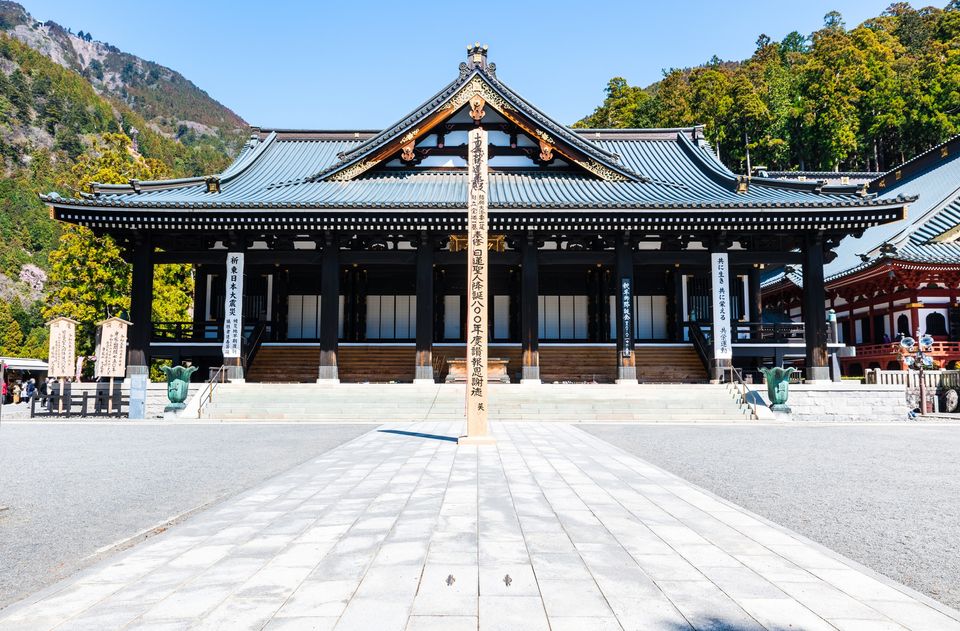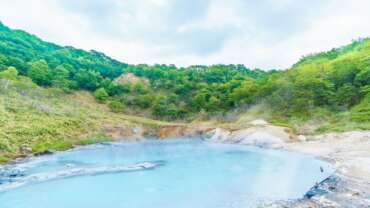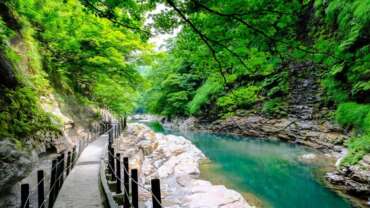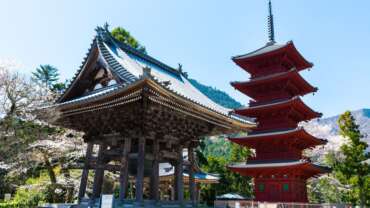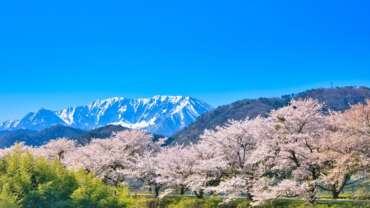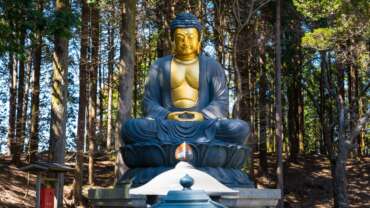World Heritage Sites - Japan’s UNESCO World Heritage Site portfolio covers both cultural and natural sites of exceptional value!
Japan’s captivating sites include castles, sweeping National Park and historic villages
These sites range from Shiretoko National Park in the north island of Hokkaido, the centrally located temple complexes of Kyoto, Nara and Nikko, and the vibrantly colored castles of Okinawa—the country’s southernmost collection of islands.
The theme of nature is predominant throughout these eighteen sites. Visit the Ogasawara Islands with their unique ecosystems; the Iwami Ginzan Silver Mine set deep into the mountains, or the sacred sites and pilgrimage routes that snake through the Kii Mountain Range in western Japan.
If you are looking for somewhere slightly more accessible—yet no less captivating—take a trip to the floating shrine of Itsukushima in Hiroshima Prefecture, the original castle of Himeji-jo in Hyogo Prefecture, or the steep thatched roofs of the Historic Villages of Shirakawa-go and Gokayama. The skeletal structure of the Hiroshima Peace Memorial stands as a symbol of peace as well as a stark reminder of an act of atrocity, and towering above them all is the most iconic site that has been a source of inspiration for centuries—Mt. Fuji.
Fujisan—Sacred Place & Source of Artistic Inspiration (UNESCO)
Iconic and inspirational—Japan’s most famous mountain
Standing over 3,500-meters tall, Mt. Fuji looms over Shizuoka and Yamanashi, where it is visible to fisherman out at sea and residents of distant Tokyo
This magnificent site has inspired artists and ascetics for thousands of years. Spiritual traditions in the area continue to this day, with practitioners of Buddhism and Shinto congregating at the notable temples and shrines that dot the foot of the mountains. Nearby villages, such as Oshino, have been preserved as they were centuries ago, offering a view reminiscent of classical Japanese woodblock prints. Regardless of whether you intend to hike the mountain, the surrounding destinations will inspire and delight you.
Gusuku Sites & Related Properties of the Kingdom of Ryukyu (UNESCO)
Remains from the lost kingdom of Ryukyu
Scattered throughout the main island of Okinawa are nine ruins symbolizing the culture of the Kingdom of Ryukyu
The sites are all located on the main island and can be accessed from the capital city, Naha by bus, car or monorail. Set foot inside brightly painted castles, walk behind the once-thought impenetrable stone walls of the Gusuku forts, and pay a visit to the final resting place of generations of the Ryukyu royal family.
Highlights
– Visiting the most important castle of the Kingdom of Ryukyu
– Paying your respects at the rocky tomb of Ryukyu royal families
– Walking behind the stone walls that protected the long-lost kingdom
Himeji Castle (UNESCO)
A striking white castle dominating the landscape
Step foot inside this castle of classic Japanese design
Explore the expansive grounds of this imposing yet beautiful structure and climb up the steep and narrow staircases to the top of the castle.
Highlights
– Climb to the top of the castle to view the surrounding scenery
– Spot the castle’s hidden defense systems
– Take a dramatic photograph of the towering white walls from below
Hiraizumi (UNESCO)
Step back in time to a golden past
Explore Hiraizumi’s immaculate temples and historical artifacts from the 11th and 12th centuries
Located in the southwestern part of Iwate Prefecture , Hiraizumi has over 3,000 National Treasures and historical sites surrounded by idyllic gardens. The Tohoku region in Japan’s northeast thrived in the 11th century under the reign of the Fujiwara clan, and Hiraizumi was the center of this prosperity.
Highlights
– Visiting Chusonji Temple and see Konjikido Golden Hall, an immaculate structure covered in gold-leaf dedicated to the Buddha of Infinite Light.
– Motsuji Temple, where locals have restored the structure and surrounding gardens to replicate its appearance centuries ago.
– The wooden carved statue of samurai Minamoto-no-Yoshitsune at Takadachi Gikeido Temple.
Hiroshima Peace Memorial (UNESCO)
A structural reminder of a painful past
The Hiroshima Peace Memorial is a symbol representing the cost of war and the importance of peace
The Hiroshima Prefectural Promotion Hall stood almost directly below the hypocenter of the blast from the atomic bomb dropped by the US military. Though much of the building’s exterior was stripped away, the skeletal frame of the building survived. Now known as the Hiroshima Atomic Bomb Dome , the structure is the first thing you will see when visiting the Peace Memorial Park located across the Motoyasu River.
Highlights
– Seeing the structure exactly as it was after the bombing—the city has gone to great lengths to preserve it.
– Every August 6th, joining the masses of people who gather around the park for the Peace Memorial Ceremony.
– Learning more by visiting the museums located in the Peace Memorial Museum.
Itsukushima Shinto Shrine (UNESCO)
A shrine set out at sea
A striking red shrine set out to sea off an island judged one of Japan’s most scenic
A short ferry ride from Hiroshima is Itsukushima-jinja Shrine —a collection of sacred buildings standing on stilts and drawing crowds who flock to see the iconic floating gate.
Highlights
– Waiting until low tide to walk up to the shrine’s gate.
– Catching a rare performance of a Noh play on a floating stage.
Iwami Ginzan Silver Mine (UNESCO)
An ancient silver mine set in deep nature
Between 1526 to 1921, Iwami Ginzan flourished as one of the world’s great silver mines, with as much as one-third of the world’s 16th century silver sourced here
Located over a wide area in the central region of Shimane Prefecture of the Chugoku Region , the mine and the surrounding area retain the same features as they did centuries ago. You’ll find the mine nestled within dense forest and mountainous terrain, which locals have taken great care to preserve.
Highlights
– Walking through the Ryugenji Mabu Mine Shaft, built in 1715.
– Exploring the nearby settlement of Omori-cho, where local miners resided.
– The 14-kilometer course stretching from the mine to the port town of Okidomari.
Ogasawara Islands (UNESCO)
Take a trip to the Galapagos Islands of Asia
Take a 25-hour ferry cruise 1,000 kilometers south of Japan’s main island to the natural paradise of the Ogasawara Islands
Consisting of 30 islands covering approximately 8,000 hectares, the Ogasawara Islands are home to over 190 endangered avian species such as the Bonin flying fox, over 400 native plant species, and a crystal-clear ocean packed with marine life. Visit these islands to get a first-hand look into evolutionary processes that have taken place in these remote ecosystems.
Highlights
– Seeing sperm whales and humpbacks on a guided whale watching tour.
– Swimming with dolphins at Futami Port in Chichijima.
– Taking a guided eco-tour of the surrounding forest, where you’ll encounter rare plant and animal species.
Sacred Sites & Pilgrimage Routes in the Kii Mountain Range (UNESCO)
Japan’s most sacred ground
This collective World Heritage site is made up of three sacred and culturally rich regions across Nara, Wakayama and Mie prefectures
Yoshino and Omine , the Kumano Sanzan, Koyasan and the pilgrimage routes that connect them reflect the fusion of Japan’s indigenous religion Shinto, which centers around the worship of nature, and Buddhism, which was introduced from overseas. The sites and their forested mountain landscape reflect a tradition of sacred mountains and mountain worship that is extraordinarily well-documented and has continued for more than 1,200 years.
Highlights
– Visiting the three grand shrines that make up the Kumano Sanzan.
– Experiencing a shukubo temple stay and live like a monk for a night.
– Stepping foot on the cobblestoned paths of the ancient pilgrimage routes.
Shirakami Sanchi Mountain Range (UNESCO)
A vast natural playground full of rare flora and fauna
Shirakami Sanchi is a vast primeval beech forest home to a precious population of animals and plants
Stretching over two of Japan’s northern prefectures, Aomori and Akita , a visit to Shirakami Sanchi allows you to explore Japan’s largest virgin beech forest. Lace up your walking boots and trek one of the many walking and hiking trails while spotting uncommon flora and fauna along the way.
Highlights
– Hiking up to the spectacular Anmon Falls.
– Spotting rare flora and fauna.
– A visit to the Shirakami Sanchi Visitor Center to learn about the history of the area.
Shiretoko (UNESCO)
Volcanic landscape home to rare wildlife
Journey the narrow peninsula of Shiretoko, and explore rugged mountains, serene lakes, and gorgeous coastline
Located on the northeastern tip of Hokkaido , the wild nature of Shiretoko was registered as a Natural Heritage site in July 2005. A volcanic mountain range runs down the center of the peninsula and includes the active volcano Mt. Iozan and Mt. Rausu, the highest peak of the range standing at 1,661 meters above sea level. This rugged, untamed landscape, with 100-meter tall coastal cliffsides, is occupied by numerous bird species and fish. Further inland you’ll find hiking trails leading to lakes and volcanic plateaus home to an abundance of wildlife.
Highlights
– Catching a glimpse of rare bird species, which feed off the flourishing marine life
– Exploring the numerous lakes that have formed around the lava plateaus typical of the region
– Trekking past waterfalls and rugged cliffsides that stretch along the Sea of Okhotsk
The Historic Monuments of Ancient Nara (UNESCO)
Spiritual structures of Japan’s old capital
Explore Japan’s oldest capital, where you’ll find ancient temples, friendly deer, and an enormous statue of Buddha
Located in Nara , 30 minutes east of Osaka , the Historic Monuments of Ancient Nara comprise numerous temples, shrines, palaces, and a primeval forest. Enjoy a walk through the expansive parks and temple grounds, where you’ll feel as though you’ve been transported to the 8th century.
Highlights
– Marveling at the Great Buddha at Daibutsuden—the famed symbol of Nara.
– Visiting Heijo Palace, the center of Japanese authority in the 8th century.
– Hiking through the Kasugayama Primeval Forest.
The Historic Villages of Shirakawa-go & Gokayama (UNESCO)
Traditional houses in picturesque villages
Explore the historic villages of Shirakawa-go and Gokayama
Gifu and Toyama prefectures house these historic villages with their immaculately preserved steep-roofed dwellings, taking you back to a different era of Japan.
Highlights
– Wandering around the traditional villages set to a natural backdrop of seasonal color
– Stepping into one of the gassho-style houses
– Viewing the village from above from the observatory in Ogimachi
The Shrines & Temples of Nikko (UNESCO)
Explore sacred sites and their distinctive carvings
Spread across an expansive natural landscape in Tochigi Prefecture, Nikko is a testament to one of the most important figures in Japan’s history
Tokugawa Ieyasu (ruling from 1603 to 1605) was the first shogun of the Tokugawa Shogunate and is credited with bringing 300 years of peace and stability to the country after a long period of regional conflict. The famed shogun’s remains are entombed at Kunozan Toshogu Shrine , while nearby Futarasan-jinja Shrine and Rinnoji Temple offer similarly spectacular sights.
Highlights
– Viewing intricate carvings displayed on the grounds of Kunozan Toshogu Shrine.
– Walking across the ancient Shinkyo Bridge, one of the most distinct in Japan.
– Marveling at the haunted lantern of Futarasan-jinja Shrine.
Tomioka Silk Mill (UNESCO)
A showcase of Japan’s silk production
Built in the late 19th century, Tomioka Silk Mill helped to transform the country into an industrial powerhouse
Located in Gunma Prefecture, northwest of Tokyo, Tomioka Silk Mill is comprised of four sites that showcase each phase of silk production. Visiting the mill, you’ll learn about Japan’s push towards rapid modernization in the 19th century, in which the country aspired to be a major industrial nation. The site was added to the UNESCO World Heritage list in June 2014.
Highlights
– Seeing hundreds of reeling machines, which were originally imported to Japan from France.
– Viewing the timber-framed brick construction style of the structures, which are the only buildings in Japan to utilize this technique.
– Visiting the colonial-style home of Paul Brunat—the Frenchman hired to supervise production at the factory.
Yakushima Island (UNESCO)
A remote island covered by ancient forest
Yakushima is a natural getaway, home to some very old and stunning nature
Located 60 kilometers out to sea from Japan’s southern prefecture of Kagoshima , visit Yakushima to walk in ancient forests, hike up mountains, wander along beaches and experience a wildly changing climate. Don’t forget your umbrella—it rains a lot.
Highlights
– Exploring the island’s waterfalls, forests, and beaches.
– Spotting wildlife unique to the area.
– Wandering in a forest of ancient cedar trees.
Sites of Japan’s Meiji Industrial Revolution (UNESCO)
See how Japan transitioned from a samurai state to a modern society
Journey to the sites that played a crucial role in Japan’s modern development
From the mid-1850s to the early 1900s, Japan underwent a radical transformation, transitioning from an isolated feudal society to an industrial power with a navy that triumphed neighboring Russia in the Russo-Japanese war. For a period characterized by Western colonialism and imperial ambitions, such rapid and sophisticated industrialization for a non-Western nation was unprecedented.
The World Heritage sites of Japan’s Meiji Industrial Revolution comprise 23 locations centered in Yamaguchi Prefecture and the Kyushu Region. Visiting each site, you’ll learn about Japan’s rapid development of industrial shipbuilding technologies, coal mining, and the institutions and ideas that helped propel the country forward during this radical period.
Highlights
– Exploring the charming town of Hagi in Yamaguchi Prefecture while learning about the fascinating journey of the Choshu Five.
– A trip to the island of Hashima off the coast of Nagasaki, where you’ll find the eerie remnants of a Meiji-era coal mine.
– Visiting the oldest slip-dock in Japan, and the well-preserved residence of its facilitator, Thomas B. Glover.
The Architectural Work of Le Corbusier (UNESCO)
World-renowned modernist architecture in Japan
See one of Le Corbusier’s renowned buildings right in the heart of Tokyo
The industrial revolution of the 19th century opened up a whole new world of heavy-duty materials that could be utilized to construct buildings. With new materials such as concrete and reinforced steel readily available, architects had an entirely new canvas to experiment with. What resulted was the modernist architectural movement, characterized by bold, symmetrical forms, a focus on functionality, and a minimalist sensibility that has influenced the realms of painting, sculpture, music, and more.
Renowned Swiss-French artist Le Corbusier (Charles-Edouard Jeanneret, 1887-1965) pioneered this modern architectural movement, designing buildings across Europe, the Americas, and in Japan and India. His massive, smooth, symmetrical concrete buildings laid the groundwork for a generation of “brutalist” modern architects and posited a new vision for functionality in building and city planning.
Selected from among Le Corbusier’s numerous works is a group of 17 buildings spread across seven countries that are part of the UNESCO World Heritage list. His single building in Japan, the National Museum of Western Art in Tokyo is included in this list.
Highlights
– Strolling the outside grounds of the museum, which are home to numerous statues by Rodin.
– Exploring more contemporary works including those of Tadao Ando and Junzo Sakakura.
Sacred Island of Okinoshima & Associated Sites in the Munakata Region (UNESCO)
Esoteric shrines with a rich history
These three shrines have a colorful history, going back to an ancient period of new religious development and cultural exchange
Scattered throughout the northeastern side of Kyushu are three shrines with centuries of cultural and archaeological history. The structures date back to the Munakata clan, who ruled over the region in the 6th century. Marked by prosperity, religious development, and international communication, the Munakata clan contributed a lasting legacy to the country, particularly in the development of Shinto rituals. These three shrines are the most exemplary lasting structures showcasing their contributions.
On the mainland, in Munakata , is Hetsumiya Shrine (known as Munakata Taisha), a site believed to be used for some of the first formal Shinto practices in Japan. The nearby island of Oshima is home to Nakatsumiya Shrine, an ancient structure with beautiful ocean views. The third shrine on Okinoshima is off limits to the public, but has a mysterious and fascinating history of its own.
Highlights
– Heading to the Shinpokan Museum at Hetsumiya Shrine to view notable votive objects and antiquities from the Korean peninsula and mainland China.
– Looking for the tomb mounds near Munakata, where leaders from the 6th century are buried.
– While visitors are not permitted on Okinoshima, you can visit nearby Oshima Island, home to Nakatsumiya Shrine, to get a similar experience.
Hidden Christian Sites in the Nagasaki Region (UNESCO)
Explore the sites of Japan’s Christian past
Following the banishment of the religion by the Tokugawa shogunate in the early 1600s, Japan’s small Christian population went underground
Christianity first arrived in Japan in the mid-1500s, where it briefly spread around Nagasaki and the adjacent islands of Amakusa . Visiting this region today, you’ll find castle ruins, rebuilt churches, and religious antiquities telling a storied history of local rebellions against the shogunate, forced rituals renouncing the Christian faith, followed by the eventual liberalization of religious practice in the mid-19th century.
Highlights
– Exploring the ruins of Hara Castle, where a local rebellion by Christian farmers erupted in the 1600s.
– Trekking up Mt. Unzen for rugged volcanic terrain followed by soothing natural hot springs.
– Visiting the well-preserved churches of Amakusa and Hirado islands.
Mozu-Furuichi Kofun (UNESCO)
Expansive tombs crafted for emperors
Japan’s first true rulers left no palaces, but their massive tombs reveal the rise of a rich and influential state
At a distance, they look like wooded hillocks with oddly regular shapes, their deep green breaking up the urban sprawl of the Osaka Plain in Kansai . But these are tombs of the mighty. Known as kofun, these dramatic tombs are architectural masterpieces and are the latest addition to Japan’s UNESCO World Heritage site portfolio.
Highlights
– Strolling along the 2.8-kilometer walkway that encircles the tomb dedicated to Emperor Nintoku (290-399), one of the world’s three largest tombs.
– Taking a drone VR tour at Sakai City Museum of all the tombs comprising the Mozu-Furuichi World Heritage site.
– Seeing earthenware and haniwa terra cotta figures taken from the tombs at Osaka Prefectural Chikatsu Asuka Museum.



